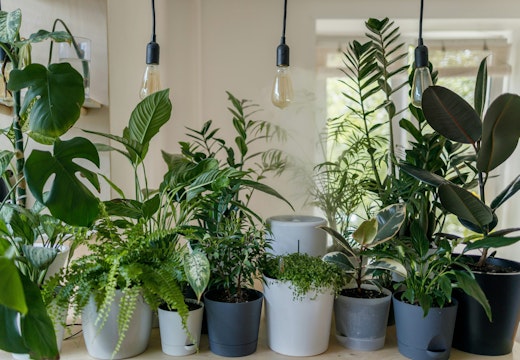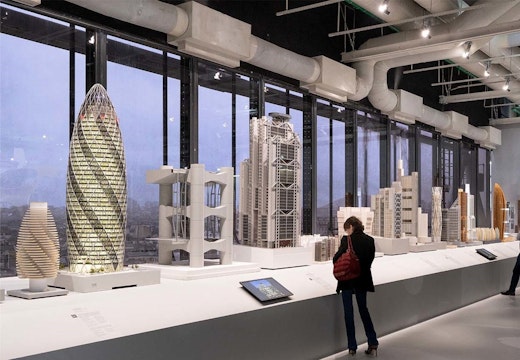Flight to character: a fightback begins against homogenous global offices
Tired of working in an anonymous corporate tower? A new movement is underway to give offices more character and purpose through storytelling and adaptive reuse of historic structures
In the handful of years since working from home suddenly became the ‘new normal’, a flight to quality[1] has defined the ongoing battle to entice employees back to the office.
This has increased the demand for, and build of, premium buildings. Occupying the most in-demand parts of our Central Business Districts (CBDs), these buildings were expected to lure reluctant work-from-home employees back through the office doors with the promise of accessibility, aesthetics and amenity.
The flight to quality approach has been successful in most major global cities, with premium vacancy in inner-city CBDs registering below 10 per cent whilst the rest of the office market languishes[2]. However, the prospects for future development remain slim – owing to the reduced availability of capital, increased building cost, and an aversion to risk and exposure around development opportunities.
As a result, a movement – or flight – towards character has become evident. This movement isn’t just about saving money or finding purpose in places outside of CBDs, though it can do both; it’s about a yearning to find meaning and purpose.
The ‘flight to character’ is about the need for spaces that are engaging and authentic instead of perfect and premium, addressing the ever-present need to sustainably revive existing building stock in the process.
The case for character
In architecture, character is shaped through design, materials, history and culture – it is a combination of elements that reflects the values and heritage of a building’s creators, as well as contributing to its aesthetic appeal and significance.
Globalisation has led to a shortage of character via the homogenisation of design – spreading standardised practices worldwide and dulling cultural nuance and storytelling. Since the 20th century, the popularity of slick, monolithic corporate architecture has seen modern metropolises across the world become more homogenised in scale, function, and potential – a decline that British designer Thomas Heatherwick has dubbed the ‘blandemic’[3].
As we move toward the mid-2020s with new challenges around economics, occupation, and utilisation of space, the attractiveness of the corporate workplace finds itself under immense scrutiny. This focus means that, for architecture and place to break free from their homogenous rut and reconnect with unique identity, organisations must align character with purpose – bringing storytelling to life and spatially connecting past and future.
Ultimately, designing spaces that reflect the values and stories of their inhabitants can create more engaging and authentic environments, and enrich the built landscape with diversity and meaning.
On purpose: character in the office
Premium and A grade office space has long been driven by programmatic and performance-based criteria like ceiling height, access to natural light, and services performance – making the result, or the base building, homogeneous and lacking in diversity.
In contrast, buildings with character tend to misalign with traditional performance requirements, instead providing unique spaces that do not neatly fit into a scoring matrix. A shift in priorities from performance-based space to space with a trinity of attractive location, amenity and meaning has moved the dial to provide opportunity for non-traditional spaces to retransform into next generation workplaces.
Currently, there is an effort to create workplaces that express the personality of a business in the context of its place (building, street or suburb) and city. In contrast with workplace’s previous trend of taking unbranded space as a part of a co-located collective, we are leaving the ‘blank slate’ office behind.
In its place is a connection to space, experience and company that is critical to the future of work and placemaking.
Character studies
Key to the flight to character is finding meaning and true differentiation and joy in the character of the space. Crafting a rich, layered space with varying attributes – whether that be different volumes, historical reference points, or different spatial arrangements – is vital. Here are three examples from our portfolio:
M&C Saatchi, Sydney: Great success can be found in transforming B grade assets into exemplary workplaces. For example, M&C Saatchi reinvented a 100-year-old heritage listed space into a diverse, character-filled home for its diverse set of advertising companies. The character, connectiveness and volume of the space provides an ‘engine room’ – or cathedral for work – whilst some of the smaller, original spaces provide opportunities for retreat and meetings. Although some of the building’s characteristics, with smaller volumes and spaces, provided design challenges, the diversity of space and changing parameters make for a more diverse and interesting workplace. The base building, which designers might once have covered over or concealed in a drive for minimalism, provides a rich reminder of the opulent past and stories of past success and innovation. The rich and layered finishes provide the ideal base for a simple and elegant interior.

Image of M&C Saatchi, courtesy of ERA-co
Goodman Hayesbery, Sydney: A dilapidated hat factory, created for a very different type of work, has been transformed into a compelling, light filled, green and industrial chic workplace for employees of property and infrastructure group Goodman. By linking the building’s heritage and industrial typology to Goodman’s market position, this project ‘leads the way’ by illustrating to Goodman’s clients how ‘industrial’ space can create an interior that supports positive employ engagement and increased occupation and utilisation of space.

Image of Goodman Hayesbery, courtesy of ERA-co

Image of Goodman Hayesbery, courtesy of ERA-co
Younghusband Woolstore Redevelopment, Melbourne: Set in Melbourne’s inner-west suburb of Kensington, this is a significant adaptive reuse project for a 123-year-old redbrick wool store and adjoining network of industrial early-20th-century buildings. Younghusband’s rich history can be traced back to 1901 when the first wool store building was commissioned. In recent years, the former store has been adapted for a range of uses including a home to small creative companies and a costume store for the Australian Ballet. Currently, it is in the process of being transformed into an office and retail space that celebrates the building’s texture and patina. To retain character, various trades have relearnt lost techniques of traditional construction in order to reinstate the heritage details in their most authentic form, such as a herringbone timber floor structure.

Image of Younghusband Woolstore Redevelopment, courtesy of ERA-co

Image of Younghusband Woolstore Redevelopment, courtesy of ERA-co
These case studies demonstrate the willingness of different organisations to create workspaces with character that authentically link to their place, history and purpose, rather than being tenants within an anonymous corporate tower.
The response to these workspaces by users has been to positively recognise their attractive and authentic qualities. The companies involved have chosen ‘character over perfect’ and in creating space with personality they have created a place that people can connect to.
Sources
[1] The Flight to Quality, sometimes called flight to safety, refers to the desire to seek the best possible asset when times are tough. According to JLL, this trend has seen corporates across the world move to higher quality, centrally located buildings that offer the features amenities and ESG credentials that map to their business priorities. JLL Research, Global occupier trends to watch in 2024, 2024.
[2] CBRE Research, CBRE Econometrics Advisors, Property Council of Australia, 2023.
[3] Thomas Heatherwick, Humanise: A Maker’s Guide to Building Our World, Viking, 20 February 2024.
 Amanda Stanaway is Principal and Strategy Leader at ERA-co, the consulting organisation that is a sister company to global architecture firm Woods Bagot. Amanda works with a broad portfolio of corporate clients worldwide. Her role encompasses strategy and interior design across the commercial, lifestyle and public sectors, and she has been instrumental in creating some of the most cutting-edge workplaces. ERA-co is a Global Partner of WORKTECH Academy and this is the first in a series of article on the ‘flight to character’.
Amanda Stanaway is Principal and Strategy Leader at ERA-co, the consulting organisation that is a sister company to global architecture firm Woods Bagot. Amanda works with a broad portfolio of corporate clients worldwide. Her role encompasses strategy and interior design across the commercial, lifestyle and public sectors, and she has been instrumental in creating some of the most cutting-edge workplaces. ERA-co is a Global Partner of WORKTECH Academy and this is the first in a series of article on the ‘flight to character’.







